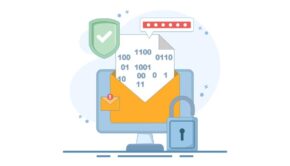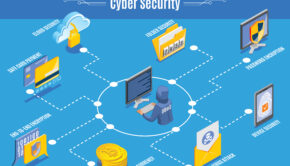How to Implement a Winning Enterprise Cybersecurity Training Strategy
Cybersecurity is crucial for any business today. With the rise in cyber threats, it’s more important than ever to ensure your employees are well-trained to protect your company’s digital assets. A good cybersecurity training strategy helps employees understand potential threats and how to respond to them. Here’s a simple guide to creating a winning cybersecurity training program for your business.
1. Understand Your Needs
Before you start creating your training program, you need to understand what your company needs. Assess your current security posture. Look at recent security incidents or near misses to identify gaps in your employees’ knowledge. You can also consider industry standards and regulations that apply to your business. For example, businesses in finance or healthcare often have stricter security requirements.
2. Set Clear Goals
Once you understand your needs, set clear goals for your training program. These goals should be specific, measurable, achievable, relevant, and time-bound (SMART). For instance, a goal could be to reduce the number of phishing incidents by 50% within the next year. Having clear goals helps you measure the success of your training efforts and keeps your team focused.
3. Develop a Training Plan
With your goals in mind, create a training plan. Your plan should cover:
- Content: What topics will you cover? Common topics include phishing, password security, safe browsing habits, and recognizing suspicious activity.
- Format: How will the training be delivered? Options include online courses, in-person workshops, or a combination of both.
- Frequency: How often will training be provided? Regular updates and refresher courses are important to keep security top of mind.
4. Choose the Right Training Materials
Select training materials that are engaging and easy to understand. Use a mix of formats like videos, quizzes, and interactive simulations. Real-life scenarios and examples make the training more relatable. Make sure the materials are updated regularly to reflect the latest threats and best practices. Explore specialized enterprise cybersecurity training programs to further enhance your team’s ability to tackle sophisticated threats.
5. Train the Trainers
If you have a team responsible for delivering the training, make sure they are well-trained themselves. They should be knowledgeable about cybersecurity and able to communicate effectively with employees. Providing them with the right resources and ongoing support ensures they can deliver the training effectively.
6. Make Training Engaging
To keep employees engaged, make the training interactive and relevant. Use gamification techniques like quizzes and leaderboards to make learning fun. Encourage participation by including real-life case studies and scenarios that relate to their daily work. The more engaging the training, the more likely employees will remember what they’ve learned.
7. Foster a Security Culture
Creating a strong security culture is essential. Encourage employees to take ownership of cybersecurity. Regularly communicate the importance of security and how their actions contribute to the company’s safety. Recognize and reward employees who demonstrate good security practices.
8. Test and Measure Effectiveness
To ensure your training is working, regularly test your employees’ knowledge. Use quizzes, simulated attacks, or other assessment tools to gauge their understanding. Analyze the results to identify areas where the training may need improvement. Adjust your training plan based on this feedback.
9. Provide Continuous Learning
Cybersecurity is a constantly evolving field. Ensure your training program includes continuous learning opportunities. Regularly update your training materials to reflect new threats and technologies. Offer advanced training for employees who need it and provide access to resources for those who want to learn more.
10. Get Feedback
Finally, get feedback from your employees. Ask them what they found useful and what could be improved. This feedback is invaluable for refining your training program. It helps ensure that the training is meeting the needs of your employees and effectively addressing the challenges they face.
Conclusion
Implementing a successful cybersecurity training strategy involves understanding your needs, setting clear goals, developing a comprehensive plan, and engaging your employees. By creating an interactive and ongoing training program, you help protect your business from cyber threats and foster a culture of security awareness. Regularly review and update your training to keep up with the evolving cybersecurity landscape. With the right approach, you can build a strong defense against cyber threats and keep your business secure.
Cover Image: Freepik
















